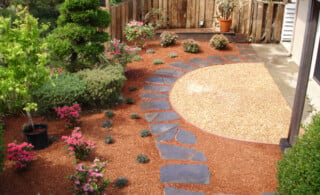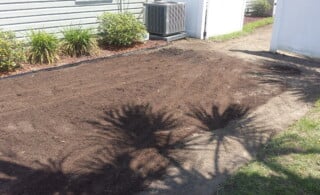
Whether you’re working with a backyard garden plot or a few acres, it’s possible to turn your gardening hobby into a fertile business. In fact, once you get it up and running, your backyard rose farm could gross $25,000 to $30,000 per acre, about half of which is typically profit.
But every rose has its thorn. While you may think of it as gardening, growing flowers at home to sell is actually a form of micro-farming. Small-scale farming is still farming, and it’s not for the faint of heart, body, or mind. In addition to the physical labor of bending, lifting, and being on your feet for extended periods, flower farmers must plan their crops, purchase supplies, and transport their harvest. Unlike a larger commercial farm, where workers help with the manual labor, partners share administrative demands, and buyers arrange their own product pick-up, you will likely be responsible for most (if not all) of the daily tasks that keep you growing.
That’s why, from species selection to sales and marketing, it’s important to have a plan in place for your blooming business. Here are a few tips to get you started.
Species Selection
The first step to growing roses to sell is to pick your niche. For example, heritage and heirloom rose varieties are becoming more popular for micro-farmers because consumers are intrigued by their history and aroma. (Thanks to their hardy demeanor and disease-resistant qualities, they also happen to be relatively easy to grow.)
But even a master of flower identification likely can’t name the more than 150 species and thousands of hybrid breeds of roses, and the overwhelming options can make picking just a few species to grow a task that is easier said than done. To find a flower that you can grow well and sell well, you’ll need to consider a variety of factors.
- Climate: Roses can grow in a wide range of climates, but certain varieties are better-suited than others for different regions. Choosing a species that is well-suited for your area will increase your chances of successfully growing, harvesting, and selling them.
- Stem length: Cut flowers need long stems. Different types of roses vary in stem length from 75 inches to more than 27.5 inches, and cutting standards vary by breed, so be sure you know what you’re growing.
- Vase life: Cut flowers should have a minimum vase life of six days. Conditions such as temperature and humidity, as well as genetics, play a role in how long a flower lasts.
- Season: Roses are a popular option all year round, but they are particularly in demand at the holidays. Choosing roses that can bloom where you are, when you need them is a great way to ensure you have enough supply to meet the demand — and vice versa.
- Availability: Some species are harder to find seeds and plants to start your growing season. Weigh the value of a high-demand rose with the ease of access of more popular species to determine what to grow.
Equipment and Supplies
Scaling up your garden to a micro-farm also means scaling up your equipment. In most cases, the tools you’ve always used for soil prep and planting will serve you well on a larger scale. However, when it comes to watering, harvesting, and transporting your cut flowers, the right tools can make the process easier and more efficient.
In almost all cases, drip irrigation is the best way to supplement rain and keep your roses happy. That’s because it waters the roots of your plants without moistening the leaves. This can help prevent disease. If you plant your garden in rows, a drip tape will do the job nicely. If the pattern is more irregular, a soaker hose may work better. If installing a drip system is beyond your DIY interest, you can hire an irrigation contractor near you. You can even specify that the system will water flower beds and whether you want it to be on a timer to get an accurate quote.
When it’s time to harvest, you’ll want a pair of high-quality shears that are sharp and well-made, and a stack of two-gallon buckets. Buy a rose-specific preservative, often available in bulk as a powder, and mix it with water in your bucket to extend the vase life of your blooms. If you have the budget, a cooler can be a worthwhile investment, as it allows you to pick flowers more than a day before delivery. If not, store flowers in a cool place out of direct sunlight.
Site and Soil Preparation
Where you plant your flowers and how you prepare the soil for them are two of the biggest success factors for a cut flower business. Although most roses require full sun to grow properly, there are some varieties that are suitable for areas in partial shade. (Remember those heirloom varieties we mentioned earlier?) You should also be sure to follow planting instructions regarding how far apart to start your seeds or transplant existing bushes.
Before you plant, prepare your soil by adding compost or other organic matter. This will naturally aerate and moisturize the soil, and it will encourage growth. Using organic mulch will cost you more than bulk mulch or synthetic materials, but it will add valuable nutrients to the soil. You can also add organic fertilizer for extra nourishment. If you don’t have a large truck bed to buy soil or mulch in bulk, you can hire a local topsoil delivery or mulch delivery service near you.
Once you’ve planted, use a row cover for up to two weeks to protect your plants from harsh weather and pests. Be sure to water regularly, and use a hoe to hack away and remove surface-level weeds until you spread mulch. As your plants grow, support netting can help solidify your crop against heavy wind and rain.
If you’re starting from seed, consider beginning your journey indoors. Soil blocks, a nutrient-rich alternative to potting mix, allow you to squeeze hundreds of seedlings into a small space with the help of a grow light. Before you plant, move the seedlings outdoors to a covered area for a three- to four-day acclimation period. From there, simply follow the instructions above.
Sales & Marketing
When it comes to selling your flowers, your choices largely depend on the area where you live. If your community boasts a bustling farmers market or flea market, a few privately-owned grocery stores, or a locally-owned florist, start there. These types of businesses are much more likely to buy from a small, local grower than large chains, and they’ll typically pay more.
If those options aren’t available in your neck of the woods, don’t worry. Local restaurants, hotels, and event planners and venues are always on the lookout for beautiful flowers. Furthermore, you may be able to sell directly to individuals via a website or social media presence. Other options include setting up a roadside stand or targeting a nearby wholesaler.
A rose may be a rose, but your flower farming experience won’t be like any other. There will be ups, downs, and everything in between. That said, with the tips above, a little skill, and a lot of luck, you will be well on your way to turning your hobby into a profitable side gig — no rose-colored lenses required.
 Dry Well Cleaning & Maintenance Tips
Dry Well Cleaning & Maintenance Tips  Soil Engineers & Testing
Soil Engineers & Testing  Xeriscaping: Environmentally Wise Landscaping
Xeriscaping: Environmentally Wise Landscaping  Fall and Winter Landscape
Fall and Winter Landscape  DIY Backyard Soccer Field: A Guide to Cost, Materials, and Legalities
DIY Backyard Soccer Field: A Guide to Cost, Materials, and Legalities 

Are You Familiar With This Topic? Share Your Experience.